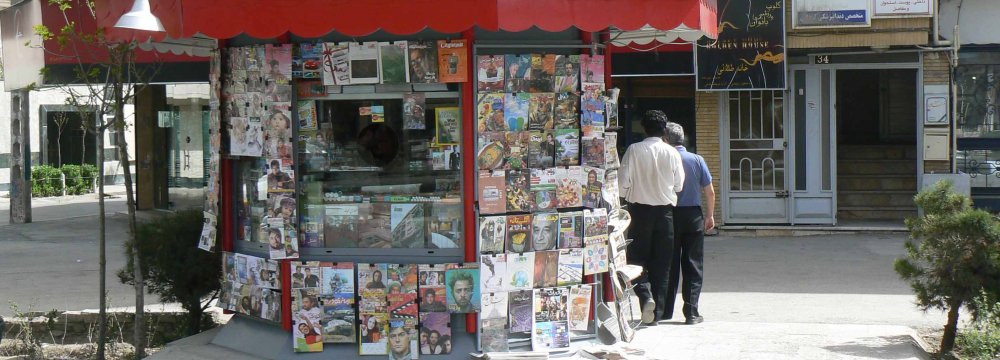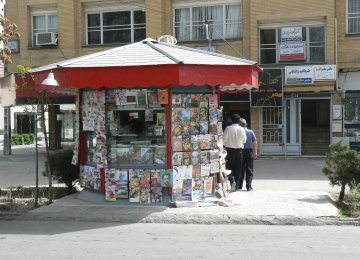It is seven years since the Iran Goods and Currency Smuggling Control Headquarters approved and issued a directive banning the sale of cigarettes by vendors and at street kiosks. However, the directive has not been put into effect by a majority of kiosk owners across the country.
“It is also a year since the National Headquarters for Control and Campaign against Tobacco and the Health Ministry came together at a meeting to stress austere implementation of the directive from the current fiscal year (started in March),” Dr Khosrow Sadeqniat, head of the Work and Environment Health Center affiliated to the Health Ministry, was quoted by ISNA as saying.
“At the meeting, the Interior Ministry in cooperation with municipalities, the Law Enforcement Forces, and universities of medical sciences agreed to take legal action against violators, after six months from the time the proposal came into effect,” he added.
The Health Ministry has placed the issue high on the agenda to help ensure public health, but municipalities (who own and lease the kiosks and newsstands selling tobacco) have so far failed to implement the directive.
In May 2015, Tehran Municipality said all street kiosks and newsstands are banned from selling cigarettes and violators will have their businesses shut down as per a directive by the Iran Goods and Currency Smuggling Control Headquarters. This would help prevent sale of contraband tobacco products that are not produced or imported through legal channels and which could be more harmful to health, the TM claimed.
“Stern warnings have been issued to kiosk owners. Some of them are located in the vicinity of junior high or high schools creating problems for students,” Reza Ghadimi, managing director of the TM’s Organizing Industries and Occupation Center (OIOC), told Mehr News Agency at the time.
Back to Square One
But the sale of cigarettes and tobacco products at the kiosks was legalized just a week after it was banned, as kiosk owners objected to the directive saying it hurt their earnings and thus their livelihoods. Following this, display of cigarette packs behind the kiosks was, however, prohibited.
The owners of a number of kiosks, whose stalls were shut down for violating the directive, maintained that selling tobacco is their main source of income because “newspapers, magazines and snacks do not have enough sales to make a living,” the Persian-language newspaper Etemad had earlier reported.
Ghadimi stressed that tobacco sale has a set of strict regulations across the world, and Iran must also make tobacco harder to supply and access.
“It is very important that the municipalities implement the directive without exception and revision,” Sadeqniat underlined. “The municipalities which are state bodies that oversee and manage newsstands should give teeth to the prohibition order.
The Ministry of Industries, Mines, and Trade has said that only supermarkets, grocery shops, and tobacco wholesalers and retailers are eligible to sell cigarettes and tobacco products.
Iranians spend $1-1.5 million (40 to 50 billion rials) on tobacco products each day and the cost of treating tobacco-related disease is almost three times more than the amount spent on tobacco consumption.
According to Deputy Health Minister Ali Akbar Sayyari, 60,000 Iranians die as a direct or indirect result of smoking every year.
Cigarette smoking adds as much as $1.3 billion (52,200 billion rials) to the annual healthcare spending in Iran, the Tehran University of Medical Sciences (TUMS) announced last week. Smoking is the reason for 20% of all preventable deaths in the country.
During the past five years, the rate of tobacco consumption has only slightly decreased, studies conducted by the Health Ministry indicate. The rate is still high among adolescents and young people (the peak age for taking the first drag has decreased from 13 to 10).
In 2016, Iranians smoked 60-70 billion cigarettes. Statistics show that an estimated 14-15% of the 80 million population are regular smokers.






Add new comment
Read our comment policy before posting your viewpoints